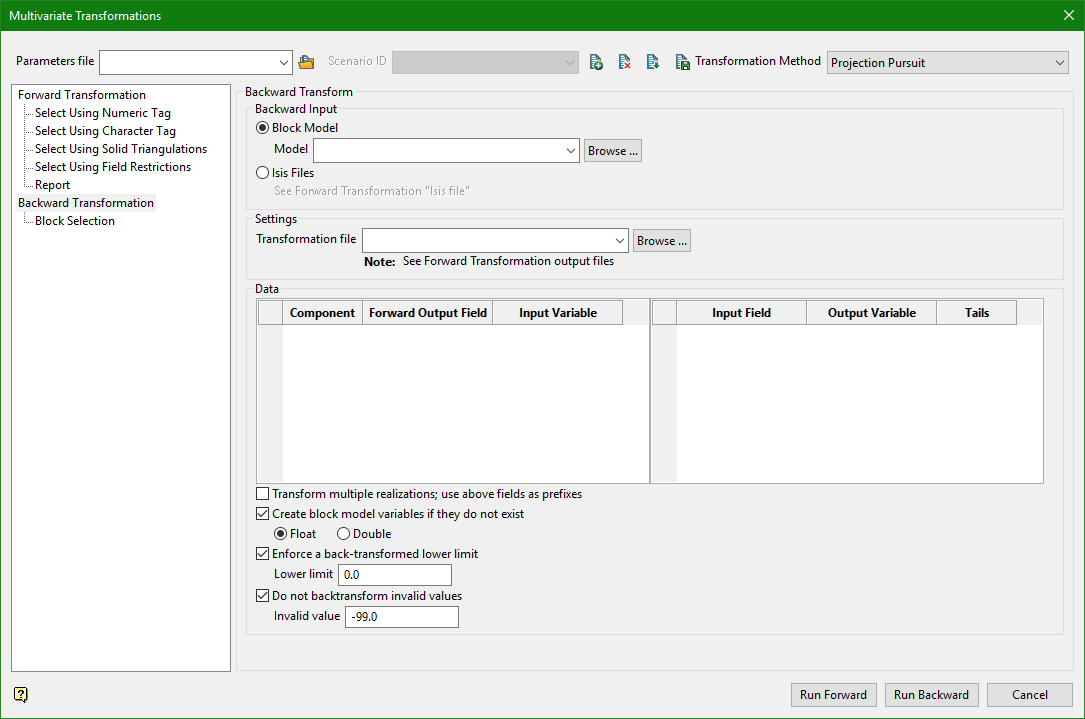Multivariate Transformations
Backward Transformation
This section is used to specify the data which will be back transformed. Backward input may come from a block model or the forward transformation input (primarily useful for validating results).

Backward Transformation
Backward Input
Input may be supplied from a block model, or the forward transformation input.
Block Model
Select this option to nominate a block model. The available drop-down list displays all block models found within your current working directory. Click Browse to select a file from another location.
Isis File
Select this option to use the input specified on the forward transformation tab.
Data
The data section of the panel is divided into two grids. The grid on the left defines the component variables which will be backward transformed. The grid on the right defines a mapping from the input fields, defined on the forward transformation tab, to the output variables. Note that relatively few components may be transformed back into their full input dimensionality. That is, you could transform 3 principal components into 4 original variables. The output variables will be in original units.
Component
This field will be automatically populated to indicate which component this row corresponds to.
Input Variable
This field must be supplied, and defines where the estimated / simulated principal components (which have originally come from the forward transform) are currently. The variables defined in this column will not be modified.
Input Field
This field will be automatically populated to indicate which input field (from the forward transformation) this row corresponds to.
Output Variable
This field must be supplied for each input field, this defines where the back-transformed (original units) variables will go. The variables defined in this column will be populated by the backward transform.
Transform multiple realizations
When using principal component analysis in conjunction with simulation there could be hundreds of input variables which would be cumbersome to select. This box can be checked to get principal component analysis to select the appropriate variables, provided they follow a consistent numbering scheme.
For example if a block model has the following 8 variables (among others): pc1_1, pc1_2, pc1_3, pc1_4, pc2_1, pc2_2, pc2_3, pc2_4. In the input variables specify "pc1_" and "pc2_". In the output variable specify "au_", "ag_", and "cu_". This will result in 12 variables being populated "au_1, au_2, au_3, au_4, ag_1, ag_2..."
Create block model variables
Check this box to automatically create block model output variables which do not exist
Enforce back-transformed lower limit
Check this box to enforce a lower limit on all back transformed values. Especially with either simulation or dimension reduction principal components may be back transformed into negative values. If this box is checked and values less than the Lower limit will be set to the lower limit.

